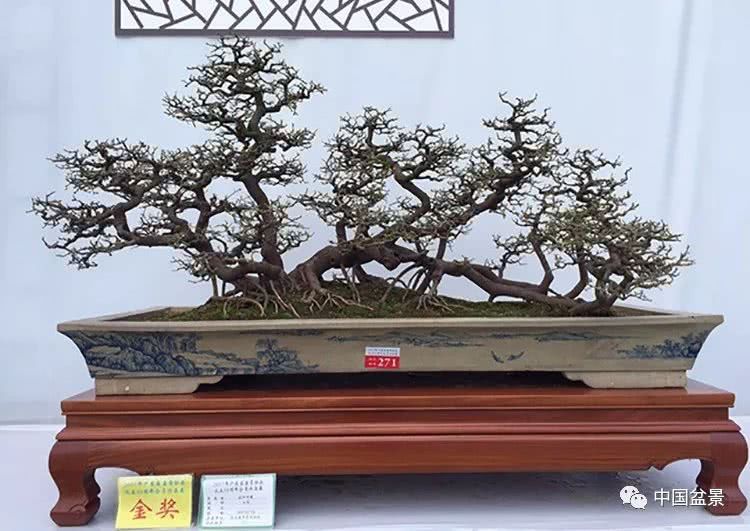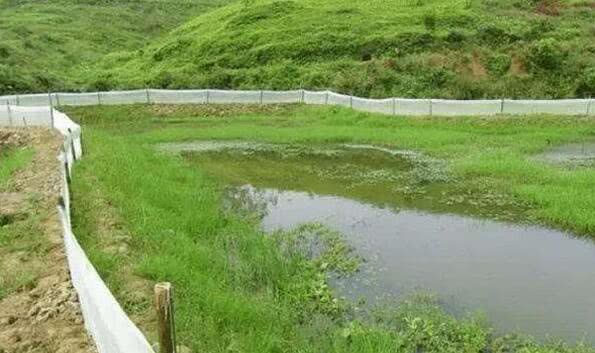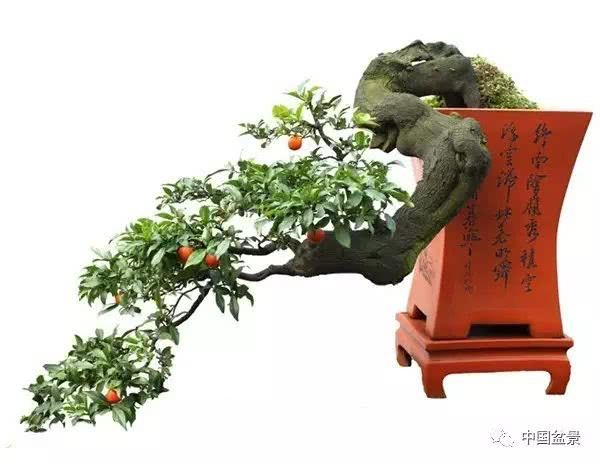Grasp the yardstick of life and carefully read the award-winning bonsai mandarin

[Bonsai Man's Understanding]
wrote an article| Xiamen, Fujian @ Zhou Yingzhi
recommended map| Ouyang Yucheng
Life has a ruler, society has a degree, calm heart is a ruler flat, heart is a ruler accurate. When the ruler and the degree are perfectly combined, life has a direction, society has rules, and the world will be beautiful.
Grasp the scale of life, the inner world has depth. The sea accepts hundreds of rivers, stands thousands of feet, has the mountain-like mind bearing, no matter where you live, you can transcend the secular world, come and go freely, with ease.
Scale grasps life, inner life has width. Relax, the whole world will make way for you. Measure yourself, illuminate the world, calmly face the ups and downs of honor and disgrace, relieve your state of mind, and the road will naturally become wider and wider.
The best way to live is to run along the ideal path with a group of like-minded people!
Back then, there was a story all the way.
- bow, with firm steps;
Look up, there is a clear distance.
Life is not rehearsed, every day is live broadcast. Grasp the time of each day, is the best treasure of life.
Orangery Bonsai Wang Jinglin Collection
Li Bingtian's Collection of Oranges Bonsai
The award-winning works read carefully
Picture and text| A bonsai ammo
This article is the first edition of "A Bonsai Net". Copyright belongs to A Bonsai Amo.
Dongfengju, commonly known as Shanju, belongs to Shanju of Rutaceae. It is an evergreen species. Its leaves are green and do not wither all year round. Shade-tolerant, drought-resistant barren, strong vitality. As a medicinal plant name is wine cake tendon, alias mountain orange tendon, and we usually say mountain orange in the same family different genus, but not Qu Yuan "orange song" described in the "Zeng branch Shan thorn, stop fruit Tuan Xi" orange tree. Because it grows mostly in the gentle slope area near the coastline in the south, in recent years, the status of mountain orange in Lingnan bonsai has risen sharply. Like Podocarpus, it is loved by more and more pot friends. Oranges gradually developed into one of the characteristic tree species commonly used in Lingnan bonsai art forest.
Let's first look at the gold medal works.
Huang Jitao (Leisure Elegance, Mountain Orange 120×120 Gold Award 86.71 points)
This work is no stranger to us, as early as in the hands of Mr. Zhu Bennan had won the gold medal bonsai exhibition.
This is a potted plant with double inclined poles. The work must first be completed in years. Even in Lingnan, mountain orange also has the personality that it is not easy to grow branches, and the branches grow slowly, so it takes a long time for bonsai to form. This work is full of branches and old trees, which cannot be achieved without years and months. Works such as foot fist song dragon claw, tamp the whole tree foundation, size two trunk thickness dependence, high and low phase support, vivid and interesting. The branches of the works are evenly distributed, and the allocation is moderate. Each branch naturally extends, and the branches are deep and straight. The dense branches of the trees are luxuriant and abundant, but there is no miscellaneous feeling, as if everything is born like this, and the branches and branches are explained, and the wonderful skill of Lingnan branch storage can be perfectly embodied.
Treetop:
Side: Bonsai basin adopts Lingnan traditional Shiwan basin
roots
details
Daily maintenance status.
Lu Zhiwen (Mountain orange specification: 130×118 Silver Award 85. points)
Ouyang Guoyao (Mountain Orange 150×70 Silver Award 83.29 points)
This is also a familiar work, once won a gold medal.
Huang Zengquan (dependent, orange 48×120, silver 80.29 points)
Ouyang Mantian (Orange specification 60×65, Bronze Award, 73.86 points)
Li Shiling (Dongfeng Orange Rhyme, Dongfeng Orange Specification 110×120 Bronze Award 72.71 points)
Little knowledge of mountain oranges:
The best digging time of mountain orange is after the beginning of spring and before Qingming. Mountain orange is afraid of cold. Before the beginning of spring, planting should be kept warm with film bag. After Qingming, the temperature gradually rises, which is unfavorable for survival. The root of Murraya paniculata could not be soaked for a long time, but it could be soaked in rooting agent for 24 hours without harm, but the root formation was rapid and the germination was neat.
Below is a description of the conservation methods of mountain orange bonsai.
Transplanting time of downhill piles: It is suggested to excavate in March-April before and after Qingming. After May, it is not suitable for downhill. High temperature, exposure and other problems are easy to sunburn buds, shrink branches and even die. After digging back, do not rush to plant, can be soaked with rooting agent after planting is conducive to growth. Mountain orange is mainly not rotten roots can basically feed, so early is very important.
Selection of piles: due to the slow growth rate of mountain orange, thick branch support is difficult to cultivate, so when selecting piles, it is best to select stumps with small cross-section.
Cutting piles: cutting piles and killing roots at one time before planting. It is better to balance the roots without occupying the basin. The root mouth is cut with a sharp knife at 45°. Increase the incision area of the root skin to make the root skin of the root mouth smooth as much as possible. The cut of the rod is sealed with self-adhesive tin foil.
Soil: choose coarse river sand soil, also said that sea sand can also (should be related to the original plant with the growing place) did not try not to recommend, fill the root 2-3 cm can be covered, the soil for replanting can be mixed with sediment, pond soil + sand 8:2 ratio, planting, planting good in the light but can shade the place, avoid direct light, affect growth. But it can't be all yin, all yin is easy to lead to rotten roots.
Watering: Mountain orange itself is drought-resistant, many new planting is because too much watering rotten roots lead to plant death, so after planting, spray water soil surface wet can be. Keep the moisture level at about 2 cm above the soil surface. Increase watering frequency after germination. Works shaped about 20 days can be watered once, watering once drenched.
Light: shading in the early stage, when the leaves become thick, dark green and shiny, it means that the new roots of the stumps have grown well. At this time, the light can be strengthened, and the thin fertilizer can be applied. After the growth is stable, it can be routinely managed.
Fertilization: thin fertilizer is applied to spring germination, fertilizer and water are gradually increased after temperature rises, decomposed farm manure + solid cake fertilizer is applied to pot surface, water and fertilizer are applied once a week, which can make new branches grow healthier and thicker more obviously.
other considerations
If the water bud leaves dehydration does not grow should be timely pruning, do not be reluctant. Keep the growth position of three or four leaves. This can reduce dehydration and nutrient loss to not consume nutrients, if the mountain orange blossom and bear fruit will be removed in time.
Pot change: the growth and recovery of mountain orange is slow. Generally, it is necessary to change the ornamental pot after about 3 years of growth recovery. It is beneficial to the rapid recovery of growth in the later stage when the pot is changed. At the same time, pruning and re-cutting the root system shall be carried out. The shallow pot shall be replanted. After about 30 days, the strong buds shall be selected and appropriately shaped.
Pruning: Mountain orange is re-pruned once a year in spring, and the top is picked once as needed after new germination. 15-20 Day or so pick the mouth part will have secondary germination, a year can get 2 speed. Generally in the 6th year, stumps reach the basic shape of 8-section works. After molding, just short cut. The young branches will increase slowly with time, and the works will become more and more vigorous and full, reaching the best viewing period. In addition, after the formation of mountain orange leaves can be retained on the stump for 3 years, good protection, non-essential circumstances do not pick.
Orangery Bonsai "Shadow" Huang Jitao Collection
Links:
Evaluation criteria (only for reference when the judges comprehensively score, not for individual scoring):
1. Title 3 minutes
The title is appropriate, refined and elegant, with far-reaching implications. It is a high summary of form and connotation, and the finishing touch.
2. Scene 85 points
Good at using the rules of bonsai art creation, can skillfully use all kinds of good techniques and branch methods to create, bold innovation, full of creativity. Exhibitors have high maturity, reasonable layout, distinct layers, beautiful composition and poetic flavor. The works are rich in connotation, both in form and spirit, and have artistic effects derived from nature and higher than nature.
3. 7 points with basin
The shape, size, texture and color of the matching basin are matched properly with the works, so that the basin and the scenery complement each other, and the topography of the basin surface is natural and beautiful, elegant and generous.
4, several 5 minutes
The shape, size, height and color of several frames are coordinated with the configuration of bonsai, which can fully reflect the beauty of bonsai and achieve the best viewing effect.
Evaluation method
The evaluation adopts the method of 100-point comprehensive scoring, and the judges separately score each exhibition work according to the evaluation standard and evaluation method and the amount decided by the organizing committee. In order to enable each judge to grasp the evaluation scale and successfully complete the evaluation work within the specified time, the judges shall score no less than 65 points for each pot of works when evaluating the exhibits, 91-98 points for gold awards and 81-88 points for silver awards. The Bronze Award is controlled at 71-78 points, with 2 points in the middle of each grade to prevent too many overlapping points and difficult final evaluation. If there is overlap at the end of the award and it is difficult to determine the award, the judges shall vote by show of hands on the re-divided works, and the majority vote shall prevail.
scoring method
The scoring method is as follows: after the judges finish the evaluation, under the supervision of the JISC, professionals use computer software to score each work. The highest score and the lowest score are removed according to the preset procedure, and the average score of the remaining total scores is the final evaluation score of the work. Then according to the score of each pot work, from high score to low score, the awards for the winning works are arranged in order. The calculated evaluation results will be submitted to the Jury Supervision Committee for approval and signature confirmation, and then submitted to the exhibition organizing committee to publicize the evaluation results to the public.
Penyou @ Ouyang Yucheng recommends bonsai as follows:
Wonderful playback:
Welcome to China Bonsai!
Bonsai exhibition hall to enjoy anytime
Carry forward bonsai culture and exchange bonsai skills!
Enjoy bonsai art and share happy life!
- Prev

Key points of Feed Management of Freshwater Crayfish
What are the key points of cultivating freshwater crayfish? Generally speaking, feed is the main source of nutrition for crayfish growth. Therefore, crayfish farmers should strengthen feed management in order to increase production and increase efficiency. The following is a specific introduction.
- Next

Bonsai design and appreciation of new bonsai works by bonsai friends
A brief discussion on the role of bonsai design effect drawing. Bonsai bonsai design effect drawing is to predict the appearance of tree embryos in the future. Foreign potted plant lovers often analyze their piles rationally and then draw them by hand.
Related
- Wuhan Hospital Iron Tree Blooming Result Was Instantly Frightened by the Gardener Master
- Which variety of camellia is the most fragrant and best? Which one do you like best?
- What is the small blue coat, the breeding methods and matters needing attention of the succulent plant
- Dormancy time and maintenance management of succulent plants during dormancy
- Minas succulent how to raise, Minas succulent plant pictures
- What are the varieties of winter succulent plants
- How to raise succulent plants in twelve rolls? let's take a look at some experience of breeding twelve rolls.
- Attention should be paid to water control for succulent plants during dormant period (winter and summer)
- Watering experience of twelve rolls of succulent plants
- Techniques for fertilizing succulent plants. An article will let you know how to fertilize succulent plants.

